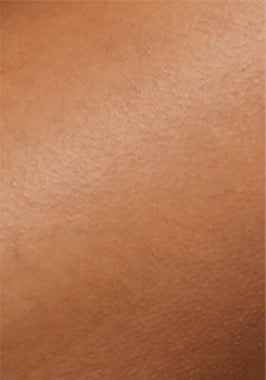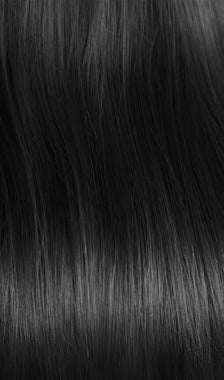Laser hair removal is a minimally invasive procedure that kills the hair follicles and its results last for years. However, the other side of the story is that it can take up to a year to see these long-lasting results. This is because the laser works closely with the hair growth cycle.
Depending on what percentage of hair is in the active growth phase at any given time, each laser session will show about 20% of the results. That's why the treatment is divided into several sessions so that doctors can target each individual hair follicle.
The effectiveness of laser hair removal also depends on a few other factors. In this article, you will find out how many laser hair removal sessions you need.

- Part 1: Can laser hair removal be permanent?
- Part 2: Factors that influence the number of sessions
- Part 3: Typical number of sessions
- Part 4: What happens after a laser hair removal session?
- Part 5: Can I shave between laser hair removal sessions?
- Part 6: Conclusion
Can laser hair removal be permanent?
Unfortunately, laser hair removal is not a permanent solution. Currently, electrolysis is the only hair removal treatment that is considered permanent. However, the advantage of laser is that it is a common procedure where results last for 2 to 10 years and hair always grows back finer and thinner.
Also see how long a laser treatment lasts. Also below is an explanation of why the laser doesn't last long and why you need multiple sessions.
The functional principle of laser hair removal
The concept behind laser hair removal is selective photothermolysis, a mechanism in which the laser is absorbed by the pigment in the hair and travels to the hair follicle where it is converted into destructive heat.
This heat either puts the follicle into a dormant state or destroys it. This means that the hair follicle loses its ability to produce hair.

The connection between laser sessions and the hair growth cycle
Now you know that a laser needs pigments to reach the follicles, right? There are 3 phases of hair growth which are described as follows:
- Anagen: In this phase, the hair receives blood directly from the follicle, which contains a large amount of pigment and is located in the papilla. In this phase, the laser can efficiently reach and destroy the follicle.
- Catagen: In this phase, the active growth of hair stops, it is removed from the papilla and pushed outwards. In this phase, it can be difficult for the laser to have its effect.
- Telogen: The hair enters a resting phase and stays there for a few days until it falls out. During this phase, the laser is ineffective.

Since only 20-80% of hair is in the anagen phase at any given time, not all hair can be treated in 1-2 sessions. It is also difficult to know which phase the hair is in at its maximum, so you will need several sessions for laser hair removal.
Factors that influence the number of sessions
Hair color and type:
Although the advanced laser can be used on any hair color, dark-haired people are still the most suitable candidates for laser treatment and require fewer sessions. Also, if your hair is thick and dense, you will need more sessions to kill the strong hair follicle.
skin type:
The greater the contrast between skin tone and hair color, the fewer sessions are required. For example, light skin types respond better to the treatment. Skin sensitivity also plays a role, as doctors have to be extra careful with this type of skin, which can increase the length of treatment.

Treatment area:
The response of the body areas being treated to the laser has a big impact on the number of sessions required. For example, facial hair responds quickly and requires fewer sessions, while leg hair requires more sessions because the hair in this area is stubborn.
Hormonal factors:
Hormonal status is an important factor that affects the first sessions and duration of laser hair removal. This is because hormones control the activity of hair follicles.
So if you have a hormonal disorder like PCOS or are taking hormonal contraceptives like OCPS, you are likely to need more laser treatments.
Typical number of sessions
The number of hair removal sessions for different body parts is variable as it is influenced by several factors. Patients have reported 80-100% results after completing the recommended sessions, so let's find out how many sessions are required for each body part.
How many laser hair removal sessions for Brazilian hair removal ?
For Brazilian hair removal, a number of 6 to 9 sessions is recommended for optimal results. However, keep in mind that you will need 2 to 4 additional sessions to become 100% hairless. Additionally, each Brazilian laser hair removal session lasts 15-25 minutes.
How many sessions of laser hair removal for the upper lip ?
The hair on the upper lip is fine and less coarse than the hair on the body, so you only need 4 to 8 sessions to notice a significant reduction in upper lip hair. Each session takes just 5 minutes for the upper lip.
How many sessions of laser hair removal for armpits?
Armpit hair is thick and coarse. It is also strongly influenced by hormones. Therefore, an average of 5 to 10 sessions are sufficient for laser hair removal in the armpits. Here, the treatment takes about 15 minutes.
How many sessions of laser hair removal for legs ?
6 to 12 sessions of laser hair removal are necessary to kill 90 to 100% of the hair follicles on the legs. Laser treatment on legs can be time-consuming as it takes 30 to 60 minutes for one session.
How many sessions of laser hair removal for the bikini area?
The number of sessions for laser hair removal in the bikini area is similar to that of Brazilian hair removal, so 6 to 12 sessions can do a good job, with each session lasting 15 minutes.

How many sessions of laser hair removal for the face?
Laser facial hair removal usually requires fewer sessions and you can achieve the desired results in 3 to 6 treatments, with each treatment lasting 10 to 20 minutes.
How many sessions of laser hair removal for chin?
Chin hair is stubborn, so an average of 10 treatments are needed to remove chin hair. However, since the area is small, each treatment only takes 5 minutes.
How many sessions of laser hair removal for the whole body?
The number of laser hair removal sessions needed to achieve full body hairlessness varies greatly. In the table below you can compare how many sessions are required for different areas of the body.
|
body areas |
Required sessions |
|
Brazilian |
6-12 |
|
upper lip |
4-8 |
|
armpits |
5-10 |
|
Legs |
6-12 |
|
bikini |
6-12 |
|
Face |
3-6 |
|
chin |
6-10 |
The intervals between consecutive sessions?
The length of the hair growth cycle also varies in different areas of the body, so you should space treatments 4 to 6 weeks apart in areas where hair grows faster, such as the face, and 6 to 8 weeks apart in areas where the hair growth cycle is slow, such as the body.
Taking into account the intervals between sessions and the total number of treatments, laser hair removal usually takes a total of 1 to 1.5 years.
The role of the individual factors
The rule of thumb does not apply to laser hair removal. In addition, each person reacts differently to the treatment, so it is impossible to say how many sessions you will need to achieve the desired results.
The sessions mentioned here are averages, not exact, so always keep in mind that you may need fewer or more sessions to achieve the best results.
What happens after a laser hair removal session?
Are you curious about what to expect after a single laser treatment? Here is your answer.
Immediate effect on the hair
Immediately after laser treatment, you may not see any effect because you have already shaved and there is no hair left. However, within a few days, you will notice that the hair is falling out of the follicles, growing back more slowly, and the hair that does grow back is finer.
A single session reduces hair by 5-10%, which is barely noticeable, so you will need to be patient for a few more sessions to see noticeable results.

aftereffects on the skin
In addition to the effects on your hair, you should also be prepared for the aftereffects on your skin. These include:
- Redness of the skin, which may appear diffusely or in the form of spots
- mild discomfort, which may be painful or felt as a tingling sensation
- Skin irritation and itching, which goes away on its own
Methods to reduce side effects and improve outcomes
The side effects of laser hair removal can last from 1 day to 1 week, and hair from the dead hair follicles will continue to fall out for up to a month.
Therefore, you should follow your practitioner's instructions and aftercare protocol so that the skin can heal, the hair can fall out and you can prepare for the next session. You can find tips for aftercare after laser hair removal at “ What to do after laser hair removal? ”
Can I shave between laser hair removal sessions?
Yes, of course you can shave between laser hair removal sessions. You should only have hair on your skin during the first treatment so that the doctor can determine your hair growth and develop an appropriate plan.
After that, you will be asked to shave the treatment area every time you go to sessions and you can shave whenever you notice hair regrowth.
Additionally, shaving is the preferred method of hair removal when undergoing laser treatment. This is because methods such as waxing, threading and depilatory creams either attack the hair follicles or sensitize the skin.
Conclusion
In this article, we talked about the average number of treatments required for laser hair removal based on consumer experience. However, laser hair removal is planned according to individual needs and sessions are scheduled accordingly.
That's why it's important to talk to your doctor about the needs and outcomes of treatment. The doctor can give you an idea, but can't say anything for sure. So it's in your best interest to have realistic expectations and trust the doctor when it comes to treatment.























